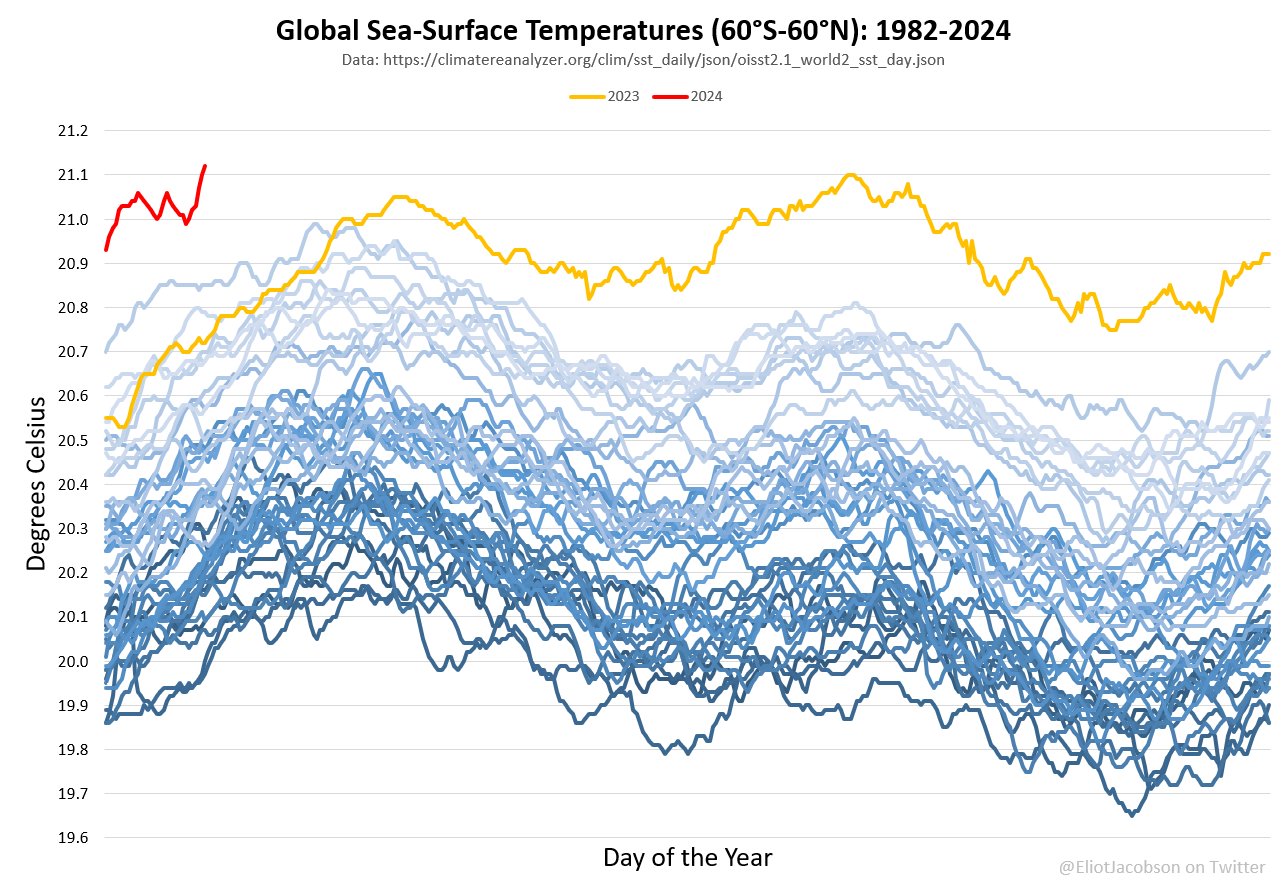this post was submitted on 02 Feb 2024
144 points (99.3% liked)
chapotraphouse
13473 readers
1 users here now
Banned? DM Wmill to appeal.
No anti-nautilism posts. See: Eco-fascism Primer
Vaush posts go in the_dunk_tank
Dunk posts in general go in the_dunk_tank, not here
Don't post low-hanging fruit here after it gets removed from the_dunk_tank
founded 4 years ago
MODERATORS
you are viewing a single comment's thread
view the rest of the comments
view the rest of the comments


Summer 2023 here in the Northeast US was suuper mild. Why was that? (not denying global warming)
Usually for the past 5 years our summers regularly go into the low 90s F but this time the highs were barely 80. Also a lot of my crops just didn't fruit. It almost feels like they could actually be spraying something but idk
Weather patterns are variable and sometimes what is important isn't necessarily just the peaks and troughs but the averages. For example, we were hitting or surpassing record highs in the Southeast June through August but the rest of the year had significantly higher rainfall and importantly, average temperatures were also above normal.
Can confirm, Florida winter is usually pretty dry and this has been the rainiest winter I can remember. Multiple times it rained for several days on end, which is very weird for here.
Yeah I remember the Florida deathbake
our winter 2023 in the Northeast was super warm, and the summer was super cool. it was really weird. This past 2 months it's basically been 50s and 40s
Most of it is probably just normal statistical variation, but a low/moderate ENSO index (which we had over this summer) is actually associated with somewhat lower average summer temperatures in most of the United States. The North Atlantic Oscillation, which is a similar quasi-periodic cycle in (shockingly) the North Atlantic, also tends to cause somewhat lower temperatures on the East Coast when it is in its negative index phase, which (again) it was over this summer. Both these influences are dominated by inter-annual variability on smaller scales, though.